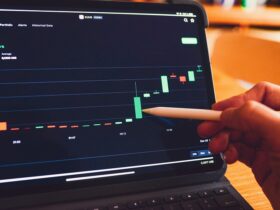Trading forex successfully isn’t about choosing between quick profits or patient investing—it’s about mastering both approaches simultaneously. Most traders fail because they focus on just one timeline, missing countless opportunities.

Whether you’re scalping for immediate gains or building wealth over months, understanding how to blend short-term precision with long-term vision creates the foundation for consistent profitability.
This balancing act requires specific skills, tools, and mindset shifts that separate successful traders from those who struggle with timing and execution.
The Forex Balancing Philosophy: Precision Meets Patience
Now that you understand the critical importance of balancing immediate execution with patient strategy, let’s dive deeper into the core philosophy that separates consistently profitable traders from those who struggle with timing and approach.
Defining Short-Term Precision in Forex Markets
Short-term precision means executing trades with surgical accuracy within tight timeframes. This approach focuses on capturing small price movements that occur within minutes to days. You’re essentially becoming a market sniper, waiting for perfect setups before pulling the trigger.
The key here isn’t just speed—it’s about quality execution. When working with a forex broker with lowest spread, every pip counts toward your profitability. Precision trading demands understanding market microstructure, order flow dynamics, and the ability to react quickly to changing conditions. You’ll need lightning-fast decision-making skills and unwavering discipline to stick to your predetermined rules.
Long-Term Success Fundamentals for Currency Trading
Long-term success in forex builds on completely different principles. Instead of chasing quick movements, you’re positioning yourself to benefit from major economic trends and currency cycles. This approach requires patience, deeper market understanding, and the ability to withstand short-term volatility.
The Psychology Behind Balanced Forex Trading Approaches
Balancing both approaches creates unique psychological challenges. You’ll need different mindsets for different timeframes—aggressive precision for short-term trades, calm patience for long-term positions. This mental flexibility doesn’t come naturally to most people.
The biggest challenge is avoiding emotional conflicts between your trading styles. When your short-term trades are losing while long-term positions are winning (or vice versa), maintaining emotional balance becomes crucial. Successful balanced traders develop compartmentalized thinking, treating each approach as separate strategies rather than competing methodologies.
Advanced Forex Trading Strategies for Dual-Timeline Success
To succeed in multi-timeframe trading, mastering analytical skills to identify precise entry and exit points is essential. Scalping, when used strategically, can support long-term portfolio growth by generating small, consistent profits that fuel larger investments.
Swing trading, ideal for medium-term gains, bridges the gap by capturing price movements over days or weeks, offering flexibility and reliable monthly returns—especially when trading major currency pairs in trending markets. Position trading serves as the foundation for wealth accumulation, focusing on long-term economic trends, central bank policies, and carry trades.
Forex Market Analysis: Reading Short and Long-Term Signals
Your risk management strategy is only as effective as the trading platform executing it, making your choice of forex broker and tools critical to long-term success. Technical analysis sharpens your short-term precision, using support and resistance, moving averages, and key price patterns for swift entries and exits. Simplicity is vital—limit yourself to 2–3 indicators like RSI and moving averages to avoid overcomplication.
For long-term positioning, fundamental analysis takes the lead, focusing on interest rate differentials, economic indicators, and central bank policies that drive sustained currency trends. Sentiment analysis adds another layer, revealing market mood and contrarian opportunities, while currency correlation studies help confirm trades and manage exposure. With these tools and insights, you’re equipped to build a diversified, time-balanced forex portfolio.
Forex Risk Management: Protecting Capital Across All Timeframes
Position sizing varies based on your trading horizon. Scalping requires smaller risk per trade due to frequent entries, while swing and position trades can justify larger risk based on setup quality and duration. The critical point is ensuring your total exposure across all trades remains within your risk tolerance. Stop-loss levels should match the volatility of each strategy—tight for scalping and wider for long-term trades.
Likewise, take-profit targets should reflect each timeframe’s nature, maintaining consistent risk-reward ratios. Managing drawdowns across multiple strategies demands discipline. Short-term losses may be offset by long-term gains, offering built-in diversification. Set clear drawdown limits and prioritize capital preservation during recovery, focusing on reducing risk rather than chasing losses.
Choosing the Right Forex Platform for Balanced Trading
Technology provides the tools, but optimizing your risk-reward ratios through advanced techniques will determine whether you achieve consistent profitability or merely break even over time.
Essential Features for Short-Term Precision Trading
- Fast Execution: Look for low-latency platforms with Direct Market Access (DMA) and co-location for scalping and high-frequency trading.
- Advanced Charting: Essential tools include multiple timeframe analysis, customizable indicators, and one-click order execution.
- Mobile Accessibility: Important for reacting to short-term market moves when away from your desktop.
Long-Term Portfolio Management Tools and Analytics
- Portfolio Analysis Tools: Needed to monitor exposure, risk, and correlations over time.
- Fundamental Data Access: Includes economic calendars, central bank updates, and macroeconomic research tools.
- Comprehensive Reporting: Useful for tracking performance over months and preparing tax reports.
- Platform Versatility: Few platforms serve both short- and long-term strategies well; using multiple platforms may be necessary.
Execution Speed vs. Spread Considerations
- Trade-Offs Exist: Faster execution often comes with higher spreads or commissions.
- Strategy-Based Platform Choice
- Use premium, low-latency platforms for scalping and short-term trades.
- Use lower-cost platforms for position trading, where speed is less critical.
- Use premium, low-latency platforms for scalping and short-term trades.
- Profitability Alignment: Choose execution speed and cost structure that matches each strategy’s profit potential.
Building Your Balanced Trading Portfolio
Mental discipline sets the foundation, but systematic performance tracking and continuous refinement of your approach ensure you’re constantly evolving toward greater trading excellence.
Currency Pair Selection for Different Trading Styles
Different currency pairs suit different trading approaches. Major pairs like EUR/USD and GBP/USD offer tight spreads ideal for scalping, while exotic pairs might provide better long-term trending opportunities despite higher costs. Your pair selection should match each strategy’s requirements.
Consider liquidity requirements for each approach. Scalping demands highly liquid pairs with consistent spreads, while position trading can handle less liquid pairs if the fundamental story is compelling. Diversifying across different pair categories reduces your exposure to single-currency risks.
Diversification Strategies Across Major, Minor, and Exotic Pairs
True diversification goes beyond just trading different pairs—it means understanding correlation patterns and economic drivers. Trading EUR/USD and GBP/USD simultaneously provides less diversification than EUR/USD and USD/JPY due to correlation differences. Your forex trading success depends on understanding these relationships.
Exotic pairs can provide uncorrelated opportunities but come with higher transaction costs and wider spreads. They might work well for position trading where costs matter less, but prove expensive for frequent scalping activities.
Capital Allocation Between Short and Long-Term Positions
Allocating capital across different trading timeframes involves balancing return potential, risk tolerance, and individual preferences. Your allocation should be tailored to your skills, experience, and the current market environment. Time availability plays a key role—if you’re unable to monitor markets frequently, prioritizing longer-term strategies may be more suitable.
As your trading abilities grow and conditions shift, your capital distribution should adapt accordingly. Regularly reviewing your performance helps identify when adjustments are needed, allowing you to refine your approach and align it with different market environments and volatility levels. Flexibility and awareness are essential to maintaining a well-balanced, responsive trading portfolio.
FAQs
What is the 3-5-7 rule in trading?
The 3-5-7 rule suggests risking 3% per trade, maintaining 5% maximum daily risk, and limiting weekly risk to 7% of account value for consistent capital preservation.
What is the 3 time frame strategy?
Trading with three timeframes is a method of determining entry points into the market by confirming the primary trend on the largest timeframe and subsequently monitoring the market situation on smaller timeframes. It allows traders to receive multiple signals for market entry within the day.
What is the 1/2/3 strategy in forex trading?
The 1-2-3 Forex strategy is a widely used trading technique that helps traders identify trend reversals and continuation patterns with high accuracy. This strategy is based on price action and is applicable to various timeframes, making it a versatile approach for both beginners and experienced traders.
Mastering Your Forex Balancing Journey
Successfully balancing short-term precision with long-term forex strategy isn’t just about using different timeframes—it’s about developing a comprehensive trading philosophy that adapts to changing market conditions. Your forex trading success depends on mastering multiple approaches while maintaining strict discipline across all timeframes.
The most successful traders don’t choose between immediate profits and patient wealth building. They’ve learned to execute both approaches simultaneously, using short-term gains to fuel long-term positions while letting long-term trends provide stability during short-term drawdowns. This balanced approach creates a more robust trading career that can withstand various market cycles and personal circumstances.










Leave a Reply